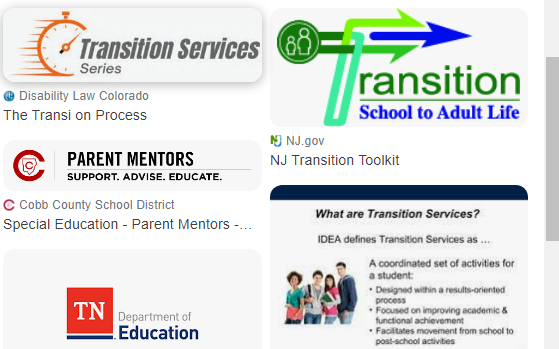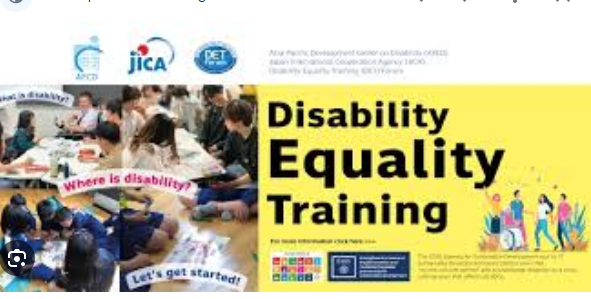Transition Strategies in Special Education
Lecture 1 Notes
LECTURE 1
Introduction to Transition Strategies in Special Needs
The topic highlights on issues of transition strategies and special needs. The student teachers will be guided to define transition strategies, describe transition strategies in the era of globalization, and the challenges facing society in implementing transition strategies. The role of economy, gender, media, education, civil society, political parties, and the family will be explored.
The Tanzanian experience of transition strategies will be the main focus of discussion with a view to understand the historical evolution of transition strategies and the disability (rights). Learners are expected also to develop understanding of the conceptual and practical definition and personal implications of “transition” to individuals with special needs and disability.
In life everyone is involved in transition. There is a transition from birth to adulthood. There are transitions from early childhood Education to primary, from primary to secondary education, and from secondary education to post secondary and or higher education.
There are transitions from home to school and from home to leading an independent life. These transitions are not a problem to average person as they are common and sometimes do not require much modifications. However it is important to note that transition planning and implementation is important for all.
What is transition?
Transition refers to a change (e.g., who provides services, what activities are available). Transition is what we experience in everyday life. These transitions in education for persons with disabilities can be: transition from home/hospital into school; transition from grade to grade or school to school and or Transition from school into the adult world.
According to Wehman (2001) transition is life changes, adjustments, and cumulative experiences that occur in the lives of young adults as they move from school environments to more independent living and work environments.
It is the bridge between the security and structure offered by the school, and the opportunities and risks of adult life. Transition is not a single point in time, but an ongoing process.
There are transitions from primary to secondary education and or from an event to another event and sometimes from classroom to a new classroom or school to school. In each of these scenarios, the children and their families are experiencing a transition.
Transitions occur at many levels, big and small, obvious or subtle. The obvious transitions such as entering or leaving a program or changing from one program option to another necessarily require planning and preparation. Other transitions such as developmental changes or moving from one activity to another in the course of a day also require thoughtful attention, but they can be overlooked because we may not immediately identify them as transitions.
Still, in all cases, transitions are about change, a passage from one experience, stage, or activity to another, and thus, all demand careful consideration.
The issue of transitions, whether they are big or small, is a particularly sensitive for infants and toddlers because of the developmental characteristics that are pronounced during this age period. Infants and toddlers have a limited framework for understanding change and fewer resources to deal with stress than older children or adults have.
Thus, consistency and continuity play a particularly important role in helping children successfully manage transitions.
It can therefore be said that transition is a life changes, adjustments, and cumulative experiences that occur in the lives of young adults as they move from school environments to independent living and work environments.
Examples of transitions include changes in self awareness, body, sexuality, work and financial needs, and the need for independence in travel and mobility. Successful transitions do increase success, confidence, and competence in ones’ work skills.
. There are 3 main types of transitions in a school setting:
.Transitions between activities within a given setting (e.g., snack to playground; outdoor recess to large group).
. Transitions between multiple settings on the same day (e.g., preschool to after-school child-care program; home to child care).
. Transitions between programs (e.g., birth-three programs to preschool, preschool to elementary school etc.).
For transition to be effective we need transition services. The term “transition services” means a coordinated set of activities for a child with a disability that
- is designed to be within a results-oriented process, that is focused on improving the academic and functional achievement of the child with a disability to facilitate the child’s movement from school to post -school activities, including post-secondary education, vocational education, integrated employment (including supported employment), continuing and adult education, adult services, independent living, or community participation;
- is based on the individual child’s needs, taking into account the child’s strengths, preferences, and interests; and
- includes instruction, related services, community experiences, the development of employment and other post -school adult living objectives, and, when appropriate, acquisition of daily living skills and functional vocational evaluation.
Transition Specialist is an individual who plans, coordinates, delivers, and evaluates transition education and services at the school or system level, in conjunction with other educators, families, students, and representatives of community organizations.
Transition to adult hood for persons with disabilities
Persons with disabilities face a number of transitions that must be successful in order to move to a stable adulthood. These transitions include:
- Employment: the ability to be employed thus is good and thus a need to develop skills related to job market and job seeking skills;
- Living arrangements: They would want to lead independent life and not stay at home all their life. Thus transitions to daily living skills are important so that they learn how to support themselves in life;
- Getting around the community. It is an aspect of mobility. Persons with disabilities want to be able to walk around freely. In order for persons with disabilities to walk freely need training, thus a need for mobility training.
- Financial independence: Economic self-sufficiency is major goal that most citizens desire. Education thus has to provide opportunity for persons with disabilities to learn financial planning, investment strategies, or methods that would help them improve their financial health;
- Making friends: persons with disabilities would want to make friends. In this aspect both parents and teachers need to be sensitive into changing nature of peer relationships.
- Sexuality and self esteem: In the transition strategies persons with disabilities are to be trained sexuality and self-esteem. As they grow into teenagers they start developing their own values.
- Having fun: In the case of having fun and leisure persons with disabilities need to participate in sports and games. The challenge is always related to preparing materials suitable for persons with disabilities.
What is a special need?
Special needs are referred to as a term used in clinical diagnostic and functional development to describe individuals who require assistance for disabilities that may be medical, mental, or psychological. Thus according to this definition, all people needing assistance to accomplish a special task can be said as having a special need.
A child or young person has special educational needs (SEN) if he or she has learning difficulties or disabilities that make it harder for him or her to learn than most other children and young people of about the same age
. Many children and young people will have special educational needs of some kind during their education. Early years settings, schools, colleges and other organisations can help most children and young people overcome the barriers their difficulties present quickly and easily.
A few children and young people will need extra help for some or all of their time an early years setting, school or college. So special educational needs could mean that a child or young person has:
- learning difficulties – in acquiring basic skills in an early years setting, school or college
- social, emotional or mental health difficulties – making friends or relating to adults or behaving properly in an early years setting, school or college
- specific learning difficulty – with reading, writing, number work or understanding information
- sensory or physical needs – such as hearing impairment, visual impairment or physical difficulties which might affect them in an early years setting, school or college
- communication problems – in expressing themselves or understanding what others are saying
- medical or health conditions – which may slow down a child’s or young person’s progress and/or involves treatment that affects his or her education.
Best practice in transition services and supports:
- collaboration among everyone involved with youth with a disability development;
- building capacity of all persons involved in transition and also within the environments of communities and society at large;
- navigation to support youth and families through the transition;
- information that is accessible and useful to everyone involved;
- education at all levels including youth, families, community members, service providers and society; and
- ongoing research to provide the evidence needed to move forward (Stewart et al.2009).
Transition strategies in globalisation
Transition strategies are techniques used to support individuals with disabilities during changes in or disruptions to activities, settings, or routines. The techniques can be used before a transition occurs, during a transition, and/or after a transition, and can be presented verbally, auditorily, or visually.
These techniques might include teaching a child with a disability including those with specific learning disabilities, speech and language impairments, mental retardation, emotional disturbance, multiple disabilities, hearing impairments, orthopedic impairments, other health impairments, visual impairments, autism, deaf-blindness, and traumatic brain injury on learning daily routine activities including purchasing things, cooking, requesting a service, and helping themselves.
For this to happen persons with a disability need to learn community skills including domestic (e.g making food and using napkins), functional academics (like using picture communication, writing skills, reading skills), communication (requesting a break, requesting bathrooms, requesting change of activity like going for lunch, choosing a meal and choosing a drink), social (like greeting others, saying thank you), and motor (training on how to use alternative legs, using hands and legs).
The transition strategies include:
Supportive infrastructure to guide the transition process that includes written materials for staff and families, forms that support specific transition activities, transition plans, interagency agreements, specific transition policies that address parental choice and program options, dedicated personnel for transition planning, and support from administration for staff participation in transition planning and activities.
Relationships and communication: there should be relationship and communication between agencies to help create a seamless system of transition by attending and participating in interagency meetings, staff meetings, encouraging dialogue between agency staff; and providing training opportunities for staff that occur across agencies and programs.
Continuity and alignment between sending and receiving programs that includes coherence across programs in terms of curriculum and expectations, continuity of related services personnel from the sending to the receiving environment, and alignment in relation to the conscious and transparent connections that are made between program curriculum and expectations.
In the era of globalisation there are opportunities that empower youth with disabilities if tapped are good to make persons with disabilities to lead good quality of life. These include:
- Internet: Once persons with disabilities are trained to use internet it means they have opened avenues to education, leisure, jobs, business, and communication media and create job opportunities in the area of ICT. Once people are aware that persons with disabilities use internet companies will start making available hardware and software for persons with cognitive, physical, and emotional disabilities to become more independent.
- Global economy: A number of business are online as such it is also an opportunity for persons with disabilities to participate. Business is becoming not that of travelling long distances as can be done through use of computers, mobile phone, and fax machines. Thus persons with disabilities have opportunity to participate.
- Advances in research: this is an opportunity that allows many social members to learn from others. More research indicate things like helping people learn, on developing instructional materials, on developing instructional environments, and on required support for employment.
- Legislative advances: Policies and acts are increasingly producing opportunities for the rights of persons with disabilities. Law are tools that support individuals in creating opportunities for everyone to become responsible.
Challenges in implementing transition strategies
Despite all efforts to make transition strategies, numerous challenges face youth with disabilities including
Violence in schools and the community: Persons with disabilities face violence in the homes, in the schools, and in the community. An example is that found in developing countries including Tanzania where persons with albinism are killed. However, these social disorders can be reduced through use of communication for creating awareness, teaching safety procedures, teaching anger management skills, counselling and providing psychological help (Wehman, 2003). Violence in homes and schools cannot be tolerated however expulsion to school cannot be the answer.
Thus early identification and intervention are critical. Strategies in the form of alternative schools, behavioural interventions and early identification can be of a help in remedying the problem.
Access to alcohol and drugs: these are issues affect productivity, performance, and safety of persons with disabilities. Access to alcohol and drugs are not appropriate to all social members. School administration policies can help to reduce the problem.
Divorce and family discord: In many cases families of children with disabilities are lead by a single family member. Thus children do not benefit from the two parents on a day-to-day basis; furthermore, on families with two parents there are history of domestic violence, excessive use of alcohol, use of drugs, and or general negligence.
Divorce and family discord adversely affects the education of children with disabilities who have developed communication disorder, orthopaedic or ambulatory disabilities, or reading or speech problems as will have limited family support.
Poverty: Many of the children with disabilities come from poor families and thus cannot have school materials, cannot pay school fees, and cannot meet their health challenges. These children cannot eat at school and thus do not attend classes seriously.
The problem of poverty cannot be solved by school teachers instead is a social problem that need to be addressed by all stakeholders.
Emphasis on school reform and testing: In many cases there are pressure set around testing and changing of curriculum. For example, testing in core curriculum science, arts, mathematics, language arts, civics and foreign languages and that all students should pass a certain level in order to receive certification.
These emphasis on testing affects children with disabilities who require need reasonable accommodations to take tests and those who need a different area of focus than the core academic areas.
These educational reforms are barriers to teachers who are trying to empower persons with disabilities to lead an independent life in the community. The problem of educational reform is becoming a societal challenge for persons with disabilities.
Unemployment of persons with disabilities: Persons with disabilities though are willing to work rarely are employed. Regardless of policies, law and circulars advocating employment of persons with disabilities yet they are unemployed. It is a challenge that even when they have the needed skills they will still be not employed.
Peer pressure: all children have influence from peer pressure on how they look, how they talk, who they spend with, what skills they possess, how rich their family is, and what person they perceive to be. This is a challenge to persons with disabilities. Persons with disabilities have poor self-esteem as a result of poor peer relationships as they grow.
Persons with disabilities have poor anger management as have not learnt to find alternative friends with a positive attitude to them. Thus issues of teasing, bullying, and harassment though common in schools affect more children with disabilities as compared to others.
Teasing is often part of school life and ranges from friendly bantering to bullying, and harassment. Teasing involves pestering or making fun of some one. Bullying is when someone is cruel or overbearing toward another person who may be weaker physically or mentally. Bullying is also a constant teasing that makes life miserable at school. Harassment is the most severe of the three and involves severity, persistence, and pervasiveness of the behaviour.
The very nature of disability is to be different on at least initial surface level like inability to walk, talk, think, or behave. Any of these behaviour can lead to some very unpleasant peer pressure, teasing, and humiliation.
Environmental challenges: these are challenges related to the environment through which persons with disabilities find themselves on. These factors include: People’s attitudes towards youth with different types of disabilities and ethnic status in general influences all aspects of transition and also interacts with many of the other environmental factors;
lack of knowledge about options and understanding of disability-related needs of youth by service providers, educators, parents and community members affects a young person’s transition process negatively;
lack of opportunities, choices and experiences in childhood through adolescence and the transition itself has a profound impact on adult outcomes; Barriers at the service level include lack of continuity of services, for example from paediatrics to adult services, stereotyping and expectations of service providers and educators, lack of access to services and underfunding of services, and rigid timelines and age requirements for transition services;
the narrow focus of transition services, especially within schools, on preparation for post-secondary education instead of addressing the ‘lifecourse’ needs of youth in all domains of transition ; and the environment of the family can also pose barriers, such as socioeconomic status (SES).
However, SES has a smaller impact on youth with disabilities than those with no disabilities (Wells et al. 2003). Other family factors include parents’ low expectations for the future and their lack of knowledge and information to help their young adult.
The role of economy, gender, media, education, civil society, political parties, and the family
Economy, gender, media, education, civil society, political parties, and the family have a role to play in managing transition strategies for persons with special needs and disabilities.
The role of economy in transition strategies
Economy plays a greater role in transition strategies for persons with special needs and disabilities. It is economic issues that affect access to education, access to skills training and hence poor access to employment.
Evidence indicate that due to economy of scales often parents would not send a child with a disability to school and giving opportunity to non-disabled child. This situation makes children with disabilities vulnerable to social inequality.
The role of gender in transition strategies
Gender is Complex relationship between physical traits and one’s internal sense of self as male, female, both or neither (gender identity), as well as one’s outward presentation and behaviors (gender expression).
Generalizations about “disability” or “people with disabilities” can mislead. Persons with disabilities have diverse personal factors with differences in gender, age, socioeconomic status, sexuality, ethnicity, or cultural heritage.
Each has his or her personal preferences and responses to disability. Also while disability correlates with disadvantage, not all people with disabilities are equally disadvantaged. Women with disabilities experience the combined disadvantages associated with gender as well as disability, and may be less likely to marry than non-disabled women.
In addressing gender issues in the transition strategies there is a need to focus on advocating issues related to: an enhanced focus on marginalized and excluded groups; the reduction/elimination of school-related gender-based violence; improved learning outcomes for girls; and an increased number of girls transitioning to secondary education and accessing post-primary opportunities.
This has to take onboard all programmes planed to empower persons with disabilities gender has to be a priority. The UN (2007) estimates that 98 per cent of children with disabilities in developing countries do not attend school.
The inclusion of all of these children in mainstream primary schools has proved to be one of the hardest and most persistent challenges of Education for All. Girls constitute over half the children out of school and only 30 per cent of all girls are enrolled in secondary school (UNESCO 2012b, Day of the Girl, 2012).
The role of media in transition strategies
The role of media is to disseminate information and creating advocacy through media coverage in the disability field. Media include social media, radio, television and others have a greater role in disseminating information about availability of transition services, schools for persons with disabilities, services available to persons with disabilities and general issues for public consumption.
The role of education in transition strategies
Education is a prerequisite to national development. Seen in this light, education is an indispensable means of unlocking and protecting human rights since it provides the environment required for securing good health, liberty, security, economic well-being, and participation in social and political activities.
The role of civil society in transition strategies
While the situation for children with disabilities is changing for the better, there are still severe gaps. On the positive side, there has been a gathering global momentum over the past two decades, originating with persons with disabilities and increasingly supported by civil society and governments.
In many countries, small, local groups have joined forces to create regional or national organizations that have lobbied for reform and changes to legislation. As a result, one by one the barriers to the participation of persons with disabilities as full members of their communities are starting to fall.
At the same time, the social model emphasizes the role of government and civil society in removing the obstacles faced by citizens with disabilities in becoming active participants in the various communities in which they live, learn and work.
The role of political parties in transition strategies
Political parties have a role in ensuring transition strategies amongst persons with disabilities. When seeking support from the community do talk about disability issues.
The question is what happens when are in power, do they fulfil what they promised about disability matters? It is through political parties that we get members of parliament and thus are instrumental in passing the laws that govern social members including persons with disabilities.
The role of the family in transition strategies
During the school-age years, all youth, including youth with disabilities, go through many changes and depend upon their families to help them adapt to new programs, new teachers, and new schools.
Thus a need for family support is just as important as students prepare to exit high school for adult lives in the community. Even though this time often leads to a youth’s increased independence from the family, a family’s role in their young person’s transition process is important.
Involvement of families in the transition process is important. Families have to actively participate in meetings, especially transition specific meetings; a need for sharing information with families is part of transition planning; and having workshops/trainings designed for parents are provided as a way of helping them better understand the transition process.
Tanzanian experience of transition strategies
Tanzania has ratified a number of international documents about creating equal opportunities for persons with special needs and disabilities including: Declaration on the Rights of People with Disabilities (1975), Convention on the Rights of the Child (1989) and the Standard Rules on the Equalization of Opportunities for Persons with Disabilities (1993). Others include:
| Policy Name | Date Enacted | Key information |
| Disabled Persons (Employment) Act (No. 2) | 1982 | Establishes a quota system that stipulates that 2 per cent of the workforce in companies (50+ employees) must be people with disabilities. Also establishes a National Advisory Council to advise the minister responsible for disability issues. |
| Act No. 3 (Disabled Persons Care and Maintenance) | 1982 | The Act provides and designates responsibilities of caring for disabled persons to families, relatives, local government, central government and non-governmental organizations. |
| Disabled Persons (Employment) Regulations | 1985 | Defines the eligibility and registration requirements for people with disabilities. |
| Vocational Education and Training Act (No. 1) | 1994 | Provides a legal framework for the implementation of a flexible vocational education/training system. |
| National Employment Promotion Service Act (No. 9) | 1999 | Provides or makes arrangements for the registration, employment, counseling, vocational rehabilitation, and placement of persons with disabilities. |
| National Policy on Disability | 2004 | Aims to provide a conducive environment for people with disabilities to engage in productive work. |
| United Nations Convention on the Rights of Persons with Disabilities | Signed: 2007 Ratified: 2009 (Optional protocol signed 2008 & ratified 2009) |
Recognizes the right of persons with disabilities to work on an equal basis with others. Prohibits discrimination on the basis of disability with regard to all matters concerning all forms of employment, including conditions of recruitment, hiring and employment, continuance of employment, career advancement and safe and healthy working conditions. |
| Persons with Disabilities Act | 2010 | Provides an obligation for employers to provide employment to qualified persons with disabilities; mandates the continuance of employment for workers who acquire a disability; prohibits discrimination in employment towards people with disabilities; mandates safe and accessible work environment. Requires that all employers of a workforce of 20+ must hire at least 3% employees with disabilities. |
According to the Persons with disability Act 2004 a number of issues that affect life of persons with disabilities are discussed some of them include:
Education: Educational system in the country does not allow for equal access for children with disabilities. Almost all school facilities at all levels are inaccessible. Teacher education and school curriculum as well do not incorporate the needs of disabled persons. As a result of the above children with disabilities enrolled for primary one is less than one percent.
Skills Training: Acquisition of skills is an important prerequisite in the life of a person with disability. Skill leads to employment and therefore, self-sufficiency and independent living. Despite this reality most skills training facilities are inaccessible to people with disabilities. In addition cost sharing policy limits the majority of would be trainees who cannot afford the same. Skills training institutions for people with disabilities lack the capacity to train competent individuals who can compete in the open labour market.
Technical Aids: People with disabilities require technical aids to enhance their functional ability. Such aids include white cane, hearing aids, and writing frame with stylus, hats and sunglasses. Other technical aids are tricycles, motorized three wheelers, modified car and Braillers. Despite their importance to disabled persons they are not readily available.
Implications of transition strategies
Personal responsibility: Involves self-control around people one might be attracted to. Financial habits and the ability to save money that one has earned, arriving at work on time and accepting criticism. There is a need to infuse issues of responsibility in the training and during implementing transition strategies.
Self-determination and initiative: Self-determination is the act to choose and to act on the basis of those choices. Persons with disabilities thus have to be trained on self-advocacy and independent living styles.
Self-determination require that young people with disabilities be provided with knowledge, competency and opportunities necessary to exercise freedom and choice in an appropriate way.
Social competence: Is about going along with people involves good communication, and interpersonal skills. Many successful people possess these skills. Persons with disabilities need to be trained on how to behave in different settings.
Vocational Competence: these are vocational skills that might lead to employment. Individuals with disabilities need to become competent in areas including automation, internet, computer, and technologies that empower people in workplace.
Lifelong learning: A need for creating opportunities for lifelong learning among persons with disabilities.

















Leave a Reply